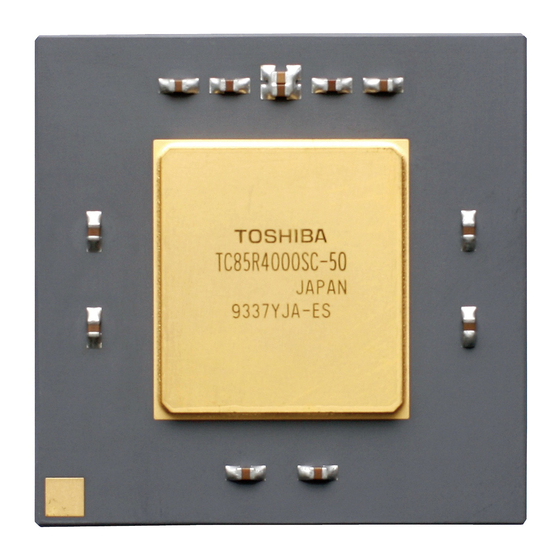
Mips Technologies R4000 Design Manuals
Manuals and User Guides for Mips Technologies R4000 Design. We have 1 Mips Technologies R4000 Design manual available for free PDF download: User Manual
Mips Technologies R4000 User Manual (754 pages)
Microprocessor
Brand: Mips Technologies
|
Category: Computer Hardware
|
Size: 2 MB
Table of Contents
-
Introduction
32 -
-
-
-
Branch Delay78
-
Load Delay78
-
-
-
-
CP0 Registers114
-
TLB Misses127
-
TLB Instructions127
-
-
Mode Bits137
-
-
Exception Types149
-
Reset Exception154
-
TLB Exceptions158
-
Trap Exception166
-
Watch Exception172
-
-
-
-
Overview182
-
FPU Features183
-
-
-
-
-
Exception Types218
-
Flags220
-
FPU Exceptions222
-
-
-
-
Power-On Reset246
-
Cold Reset247
-
Warm Reset247
-
-
Warm Reset251
-
Clock Interface
257-
-
Masterclock259
-
Masterout259
-
Syncin/Syncout259
-
Pclock259
-
Sclock260
-
Tclock260
-
Rclock260
-
-
-
-
Cache States285
-
-
-
Noncoherent295
-
Sharable295
-
Uncached295
-
Update295
-
Exclusive296
-
-
Strong Ordering297
-
-
-
Invalidate300
-
Update300
-
Snoop300
-
Intervention301
-
-
-
-
System Model306
-
Load308
-
Store308
-
Processor Write309
-
-
-
Counter318
-
LL and SC319
-
System Interface323
-
System Interface
324-
Terminology324
-
-
Interface Buses325
-
Issue Cycles326
-
-
-
-
Load Miss348
-
Store Miss351
-
Store Hit356
-
CACHE Operations357
-
-
-
-
-
-
Scdchk Bus411
-
SCTAG Bus411
-
JTAG Interface
419 -
-
-
ECC Check Bits444
-
Delay Times720
-
Cpu Board721
-
-
R4000 Pinouts
732
Advertisement
